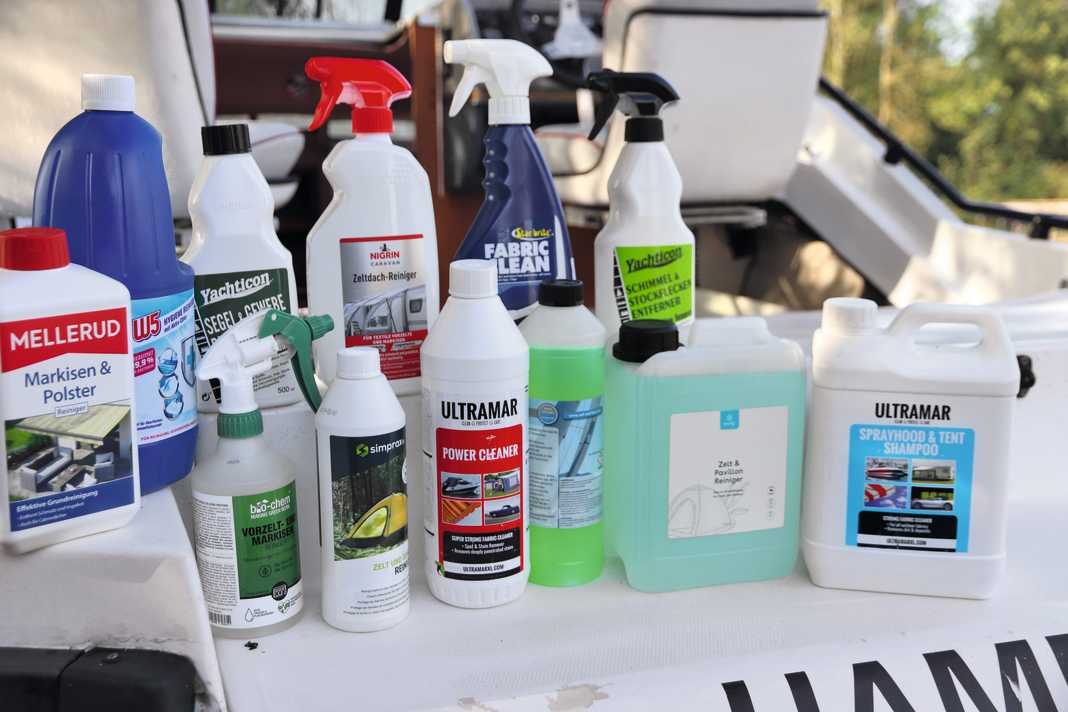



The slip or crane date is approaching, the upholstery has been stowed away in the cellar at home for weeks and the personal belongings are stored in the boot of the car. Often the tarpaulin or convertible top, which has now had to do without sun for several days and has the dampness of the past late autumn nights in its fabric, remains on the boat until the bitter end. After all, it could rain on the slip date and you don't want to leave your boat defenceless against the elements.
As a result, tarpaulins, cake stands and convertible tops often disappear into winter storage without being cleaned. "We hang them up to dry first and then clean them at the start of the season," I hear more than one owner say. The only question is what to use? Is "mild soapy water and a soft sponge" enough, as most soft top manufacturers recommend to protect the fabric? Not at all.
In the vast majority of cases, normal soiling caused by environmental influences is joined by the unpopular "spack", in plain language: mould. And this can rarely be dealt with using run-of-the-mill cleaners. Whilst pure PVC hulls are not very sensitive in this respect and the dirt can simply be wiped off the smooth surface, the more stylish fabric hulls of our boats are a real problem when it comes to spack.
The test products
For this reason, we took a look around the cleaner market and put twelve products through their paces: Well-known companies such as Yachticon, Nigrin and Starbrite took part, but lesser-known products such as Simprax and Ecofy from various online shops also got their chance. As an inexpensive outsider, the W5 hygiene cleaner from discounter Lidl also took on the competition - an illustrious test field, one would think.
The task
We chose to test the convertible top of a 6-metre sports boat made from what used to be a light-coloured, beige textile fabric. The top had only been cleaned superficially with the above-mentioned "mild soapy water" for several years and also showed clear signs of mould and dark stains on the inside. A preliminary test with household cleaners showed no visible success. A treatment with a high-pressure cleaner would certainly have helped at this point, but we wanted to spare the age-weakened seams of our soft top in particular this ordeal.
How it was tested
Before the cleaners were allowed to get to work, the fabric was dried, loose dirt and dust was removed with a brush and the inner roof surface was divided into twelve roughly equally sized areas (around 0.15 square metres) using adhesive tape. The side convertible parts with the sensitive foil windows were sorted out as a precaution to protect them from possible "blindness" due to "chemical weapon use".
The cleaners were then applied to one of the test areas according to their instructions, all of which were in German, and worked in with a sponge, cloth or brush, waiting for the different exposure times if necessary, and finally rinsed off with plenty of clear water.
While the chlorine-containing products such as Yachticon Mould and Mildew Stain Remover or Lidl W5 Cleaner showed their chemical effect after just a few minutes, the cleaning effects of the other products only became apparent after complete drying.
The tarpaulin cleaners in detail
AVT
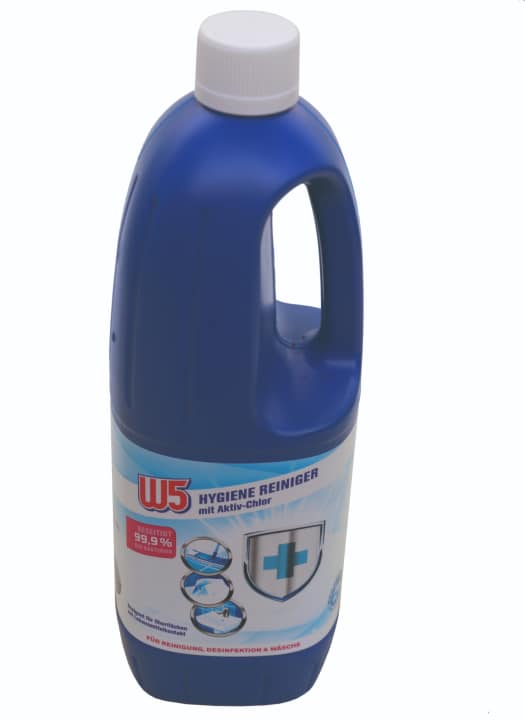
Mellerud
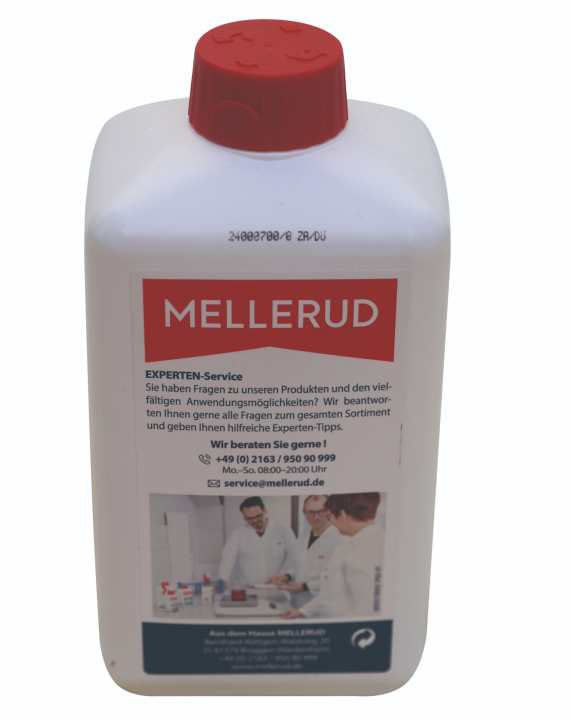
Eco: Fy
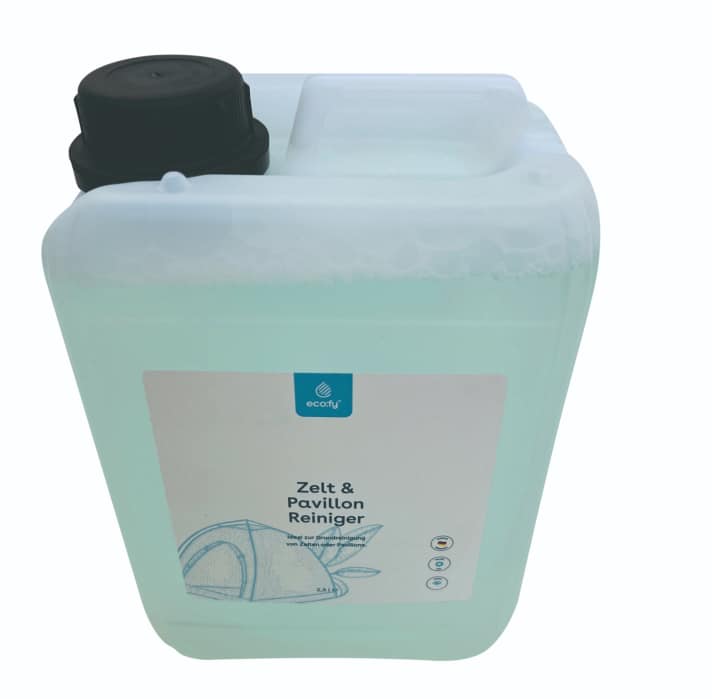
Nigrin
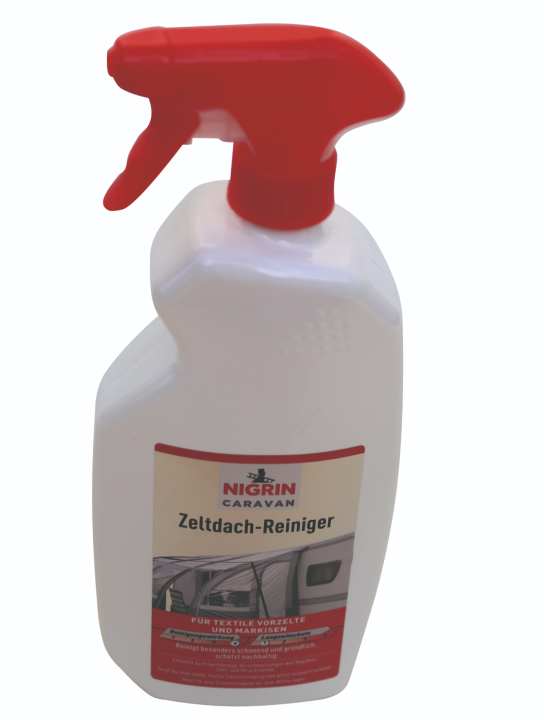
Ultramar
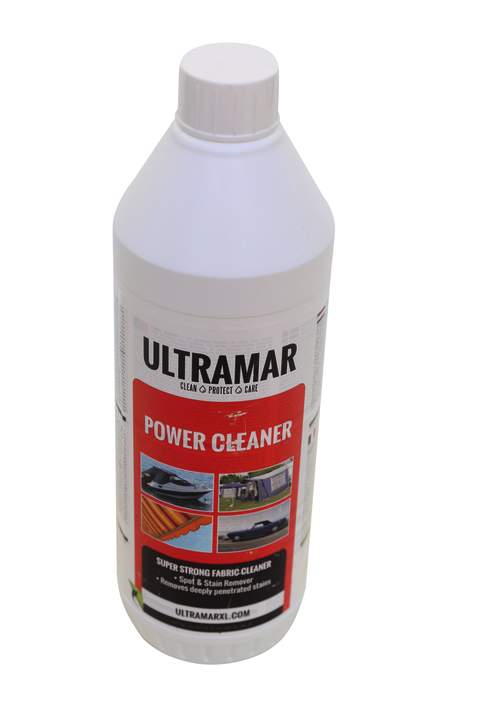
Ultramar

Nanoprotect

Simprax
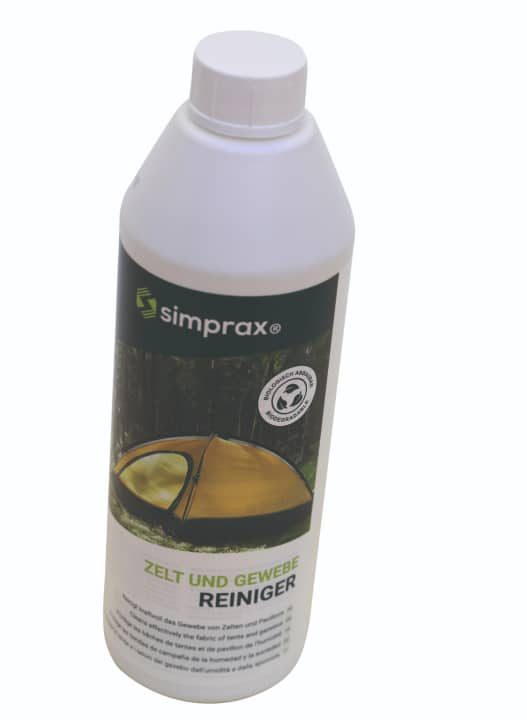
Yachticon
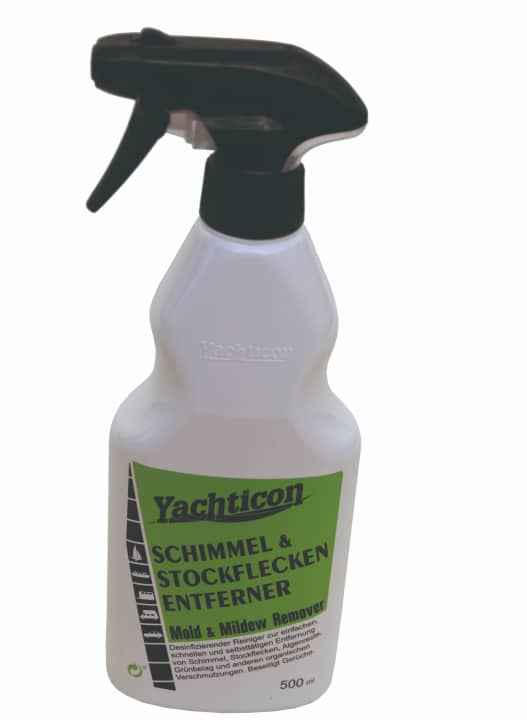
Bio-Chem
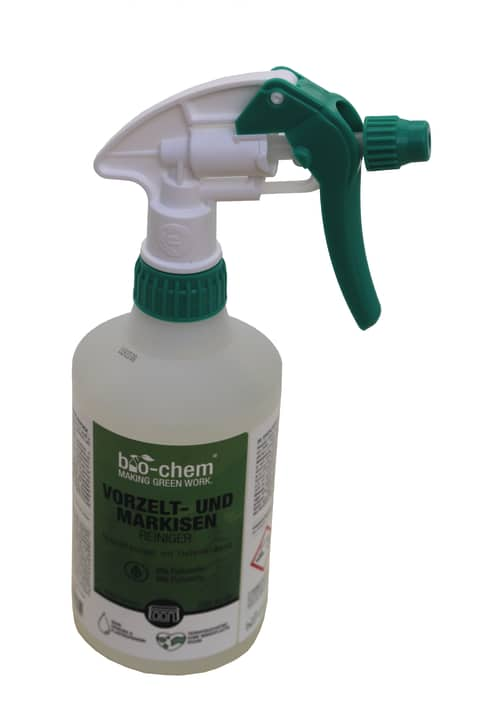
Starbrite
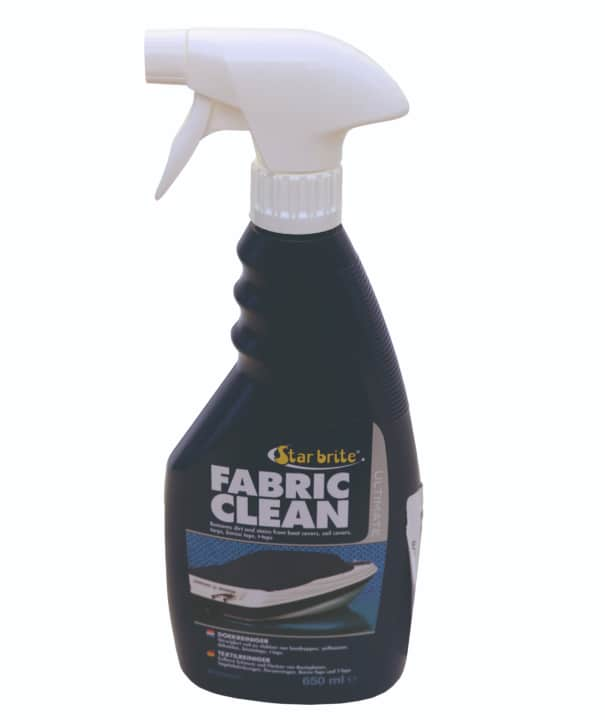
Yachticon

The results
The following results were achieved after 24 hours drying time: good results were achieved in our practical test by the products Yachticon mould and mildew stain remover, Nigrin tent roof cleaner, Ultramar Powercleaner and the awning cleaner from Biochem. The surprise in the test field, however, was the hygiene cleaner from the discounter Lidl. The W5 product proved to be at least on a par with the branded products and is also unbeatably cheap. The downside: Although suitable for textiles, it must be said that the W5 cleaner bleaches the fabric and is therefore only suitable for light-coloured materials. Dyed tarpaulins may lose colour. However, if mould and mildew stains are the problem, Yachticon and W5 are the undisputed leaders in the test field.
The cleaners Yachticon Sail and Fabric Cleaner, Starbrite Fabric Clean, Mellerud Awning Cleaner and Sail and Kite Cleaner from Nanoprotect form the midfield. They are all suitable for cleaning, but these products are less effective at removing mould stains. The effect of the remaining cleaners can be described colloquially as "moderate". They are also suitable for cleaning soft tops, but the above-mentioned products are simply more effective.
Conclusion on the tarpaulin cleaner test
To summarise, the success of cleaning depends largely on the type of stain. If you are dealing with mould stains, there is no getting around products containing chlorine. The discounter product W 5 in particular shows that cheap does not mean bad. If you are dealing with normal soiling, the differences between the cleaners are not as great as their price difference would suggest. A cleaner that works is available for around 20 euros per litre. It goes without saying that the soft top should be re-impregnated next spring after extensive cleaning. The same applies to careful handling of the products during cleaning. Neither the cleaning agents nor the rinsing water should get into the environment, nor should you work without gloves and, if necessary, protective goggles (chlorine products).

